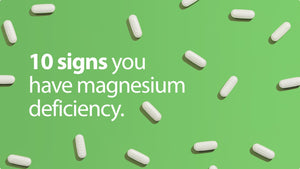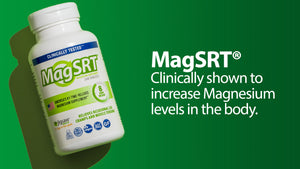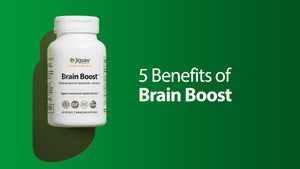The potential benefit of omega-3 fatty acids was first documented by several researchers studying the Inuit Eskimos in the 1970s. Despite their high fat diets and resulting obesity, the Inuits had a low rate of death from heart disease. Given that the Inuits diet consisted primarily of cold-water fish, the researchers concluded that this type of fat -- omega-3 fatty acids -- mattered more than how much fat was eaten.1
Since then, thousands of studies have made similar conclusions: omega-3 fatty acids provide considerable health benefits for the gastrointestinal, neurological, cardiovascular, circulatory, and other systems. But what are fatty acids?
Essential Fatty Acids
The essential fatty acids -- called essential because the body cannot make them on its own -- are omega-3 and omega-6 fatty acids. These essential fats must come from the diet. And they must come from the diet in a balanced ratio.
When the ratio of the essential fatty acids becomes imbalanced -- that is, when the omega-6s overwhelm the omega-3s or vice versa -- the body can experiences chronic conditions.
It's precisely an imbalance between the essential fats thats wreaking havoc on our health today. Americans get substantially more omega-6 fats than omega-3s. And the more omega-6 fats are consumed, the more the body is unable to utilize the powerfully healthy omega-3s when it does get them.
To stay healthy, we need to balance our consumption of omega-3 and omega-6 fatty acids. One expert suggests a 1:1 ratio -- and never more than 2:1.3
Omega-6 Fatty Acids
The healthiest type of omega-6 fats contains linoleic acid which, inside the body, converts to gamma lineolic acid or GLA.
Good dietary sources of omega-6 fatty acids can be found in cereals, eggs, poultry, whole-grain breads, and some vegetable and seed oils.
However, as was discussed previously, Americans consume 11-30 times MORE omega-6 fatty acids than omega-3smostly in the form of vegetable oils (corn, safflower, etc.) that have been partially hydrogenated. Consuming high quantities put the body at risk for some of todays most life-threatening conditions.
Unfortunately, these partially hydrogenated oils are all too often hidden in highly processed, packaged convenience foods like cookies, cakes, crackers, fried foods, fast foods, chips, granola bars, candy bars, and more.
Clearly, avoiding processed, convenience, and fast foods not only promotes better health, but it allows the body to get the most benefit from the heart-healthy omega-3s.
Omega-3 Fatty Acids
There are three major types of omega-3 fats used by the body: alpha-linolenic acid (ALA), eicosapentaenoic acid (EPA), and docosahexaenoic acid (DHA).
ALA. While ALA comes from plants and plays a different role in the body than do EPA and DHA, enzymes in the body can convert ALA to EPA if needed. Dark green leafy vegetablesand flax, walnuts, pumpkin seeds, soybeans, and their oilsare all excellent sources of ALA.
Adults should get about 1.6 grams of ALA each day. If a pregnant woman or a breast-feeding mother has enough ALA, her fetus or infant should have enough. For infants who are not breast-fed, look for formulas with 1.5% ALA.2
EPA and DHA. The animal-based EPA and DHA fatty acids have reaped the most attention, particularly for their heart-healthy benefits. Unfortunately, because the richest sources of EPA and DHA fatty acids are generally unavailable, theyre not often found in the American diet.
Oily cold-water, wild-caught fish (salmon, herring, tuna, mackerel, sardines, anchovy, halibut) and wild game (particularly, venison and buffalo) are excellent sources of EPA and DHA fats. And because of its powerful health benefits, some farmers are now feeding their chickens plants instead of grain in order to produce omega-3 enriched eggs.
For those who dont eat wild fish and game, though, there are some healthy alternatives. Daily doses of fish oil have been shown to provide the equivalent of 2-3 or more servingsas recommended by the American Heart Associationof wild fish or game each week.
Most fish oils come in a concentrated liquid or capsule form, and adults should take at least 3,000-4,000 mg per day (a 1,000 mg fish oil capsule contains 180 mg EPA and 120 mg DHA).2
Pregnant women need lots of omega-3s to nourish the developing brains of the fetus. If the mother does not get enough omega-3s, the growing fetus will take all thats available, depleting the mother and leaving her susceptible to depression.4
A breast-feeding mother also needs an adequate supply of omega-3s to continue nourishing her childs brain. If breastfeeding is not possible, then look for infant formulas containing 0.35% DHA, 1.5% ALA, and less than 0.1% EPA.2
Cited Sources:
1) Rindfleisch, A., Inflammation: nutritional, botanical, and mind-body influences, Southern Medical Journal, 3/1/2005.
2) Omega-3 Fatty Acids, ADAM
http://www.adam.com/democontent/IMCAccess/ConsSup...
Accessed September 2005
3) Omega-3: Natures Miracle Panacea, Blaylock Wellness Report, Vol. 2, No. 4, 4/1/2005.
4) Omega-3 Fatty Acids, Whole Health MD
http://www.wholehealthmd.com/refshelf/substances_...
Accessed September




















